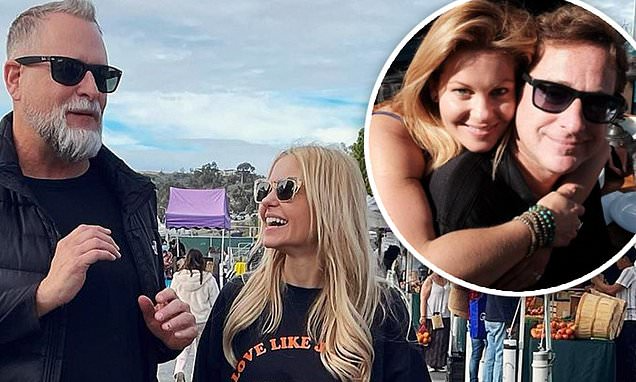
Not Everything Was Fun and Games
While Fuller House presented a picture-perfect family sitcom on screen, the reality behind the cameras was far more complex. The cast had decades of shared history, clashing personalities, and personal challenges that sometimes spilled onto the set. From creative disagreements to scheduling conflicts, the making of Fuller House was full of drama—and some of it surprisingly candid.
1. Returning After Decades
-
Original cast members returned after nearly 30 years
-
Reconnecting after long periods sometimes caused friction
-
Adjusting to modern filming techniques and streaming formats added stress
2. Candace Cameron Bure’s Leadership Role
-
D.J. Tanner actor often served as an on-set mediator
-
Advocated for professionalism and positivity
-
Occasionally clashed with crew over creative decisions
Candace’s influence helped maintain cohesion but sometimes highlighted tension points.
3. Jodie Sweetin’s Personal Challenges
-
Open about her past struggles with addiction and mental health
-
These experiences sometimes created emotional intensity on set
-
Cast and crew supported her, but tensions occasionally arose during long shoots
4. Andrea Barber’s Return to Acting
-
Took a long break before reprising Kimmy Gibbler
-
Had to re-adjust to acting routines and comedy timing
-
Occasional disagreements over scene direction with writers and co-stars
5. Scott Weinger and Guest Appearances
-
Returning guest stars like Steve Hale required careful scheduling
-
Some actors felt tension due to limited screen time versus main cast
-
Negotiating cameo roles sometimes led to off-camera drama
6. Script Changes and Last-Minute Rewrites
-
Writers often updated scripts during filming
-
Some cast members felt pressured to memorize new lines quickly
-
Urkel-style comedy moments occasionally influenced dialogue for nostalgia
7. Scheduling Conflicts
-
Actors had personal commitments, other projects, or family obligations
-
Coordinating schedules for filming was challenging
-
Some episodes required reshoots or scene adjustments
8. Creative Differences
-
Debate over tone: balancing humor, family messages, and modern references
-
Some cast members preferred classic 90s nostalgia, others wanted updated storylines
-
Writers had to mediate disagreements to maintain consistent storytelling
9. On-Set Tensions
-
Long filming hours and pressure to perform led to occasional frustration
-
Some actors preferred improvisation, others wanted strict adherence to scripts
-
Differences in comedic style caused clashes but also memorable performances
10. Social Media Impact
-
Cast members shared glimpses of life behind the scenes
-
Fan reactions to posts sometimes created pressure or stress
-
Maintaining professionalism on and off-camera was key
11. Handling Criticism
-
Fuller House received mixed reviews from critics
-
Cast members had differing opinions about critiques
-
Public scrutiny occasionally intensified behind-the-scenes tension
12. Family Dynamics
-
Returning cast had strong off-screen friendships and sibling-like rivalries
-
Personal history sometimes affected on-set behavior
-
Balancing nostalgia with current relationships required maturity
13. Production Pressure
-
Netflix’s streaming schedule demanded rapid shooting and editing
-
Tight deadlines sometimes created stress between directors and cast
-
Pressure to deliver episodes for binge release was new compared to traditional network sitcoms
14. Physical Comedy and Stunts
-
Some actors performed physical comedy sequences
-
Miscommunications during stunts occasionally led to minor disputes
-
Coordinating safety while maintaining comedic timing was challenging
15. Managing Legacy and Expectations
-
Everyone was aware of Full House’s iconic status
-
Pressure to meet fan expectations created tension
-
Cast had to balance honoring the past with creating fresh content
16. Resolving Conflicts
-
Most disagreements were resolved through communication and compromise
-
Producers often mediated disputes quietly
-
Positive camaraderie off-camera contributed to final episode quality
17. Lessons From the Drama
-
Even family-friendly sets face behind-the-scenes tension
-
Professionalism and respect are key to managing conflicts
-
Nostalgia projects carry unique pressures for returning actors
Conclusion
While Fuller House offered laughter and warmth on screen, the reality behind the cameras included tension, conflicts, and personal challenges. From creative disagreements to scheduling hurdles and emotional moments, the cast navigated behind-the-scenes drama while delivering a show that honored the original series. The ability to overcome these obstacles is a testament to their professionalism, commitment, and dedication to the Tanner family legacy.
FAQs
1. Was there tension among the Fuller House cast?
Yes, like any long-running project, there were occasional creative disagreements and personality clashes.
2. Did personal issues affect filming?
Some actors had personal challenges, including Jodie Sweetin’s past struggles, which added emotional intensity but were managed professionally.
3. How did the production handle last-minute script changes?
Cast had to adapt quickly, sometimes memorizing new lines on short notice, guided by directors and writers.
4. Were scheduling conflicts common?
Yes, actors balanced other projects and personal commitments, requiring careful coordination.
5. Did the cast manage to maintain good relationships?
Overall, conflicts were resolved through communication, compromise, and off-camera friendships, ensuring a cohesive production.
